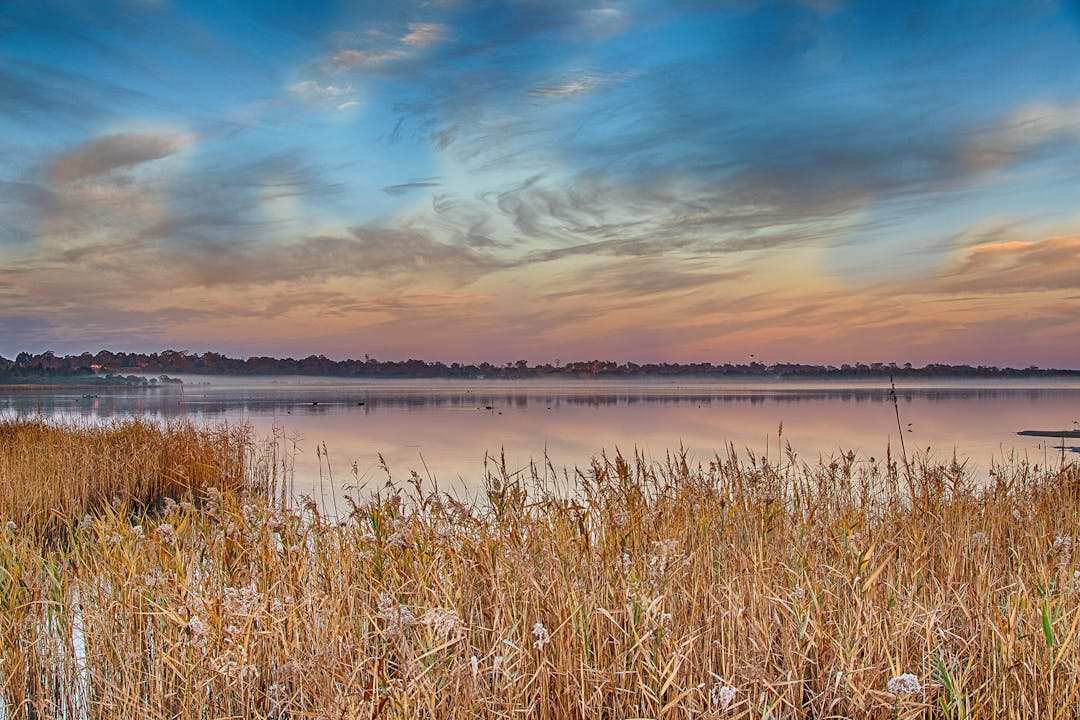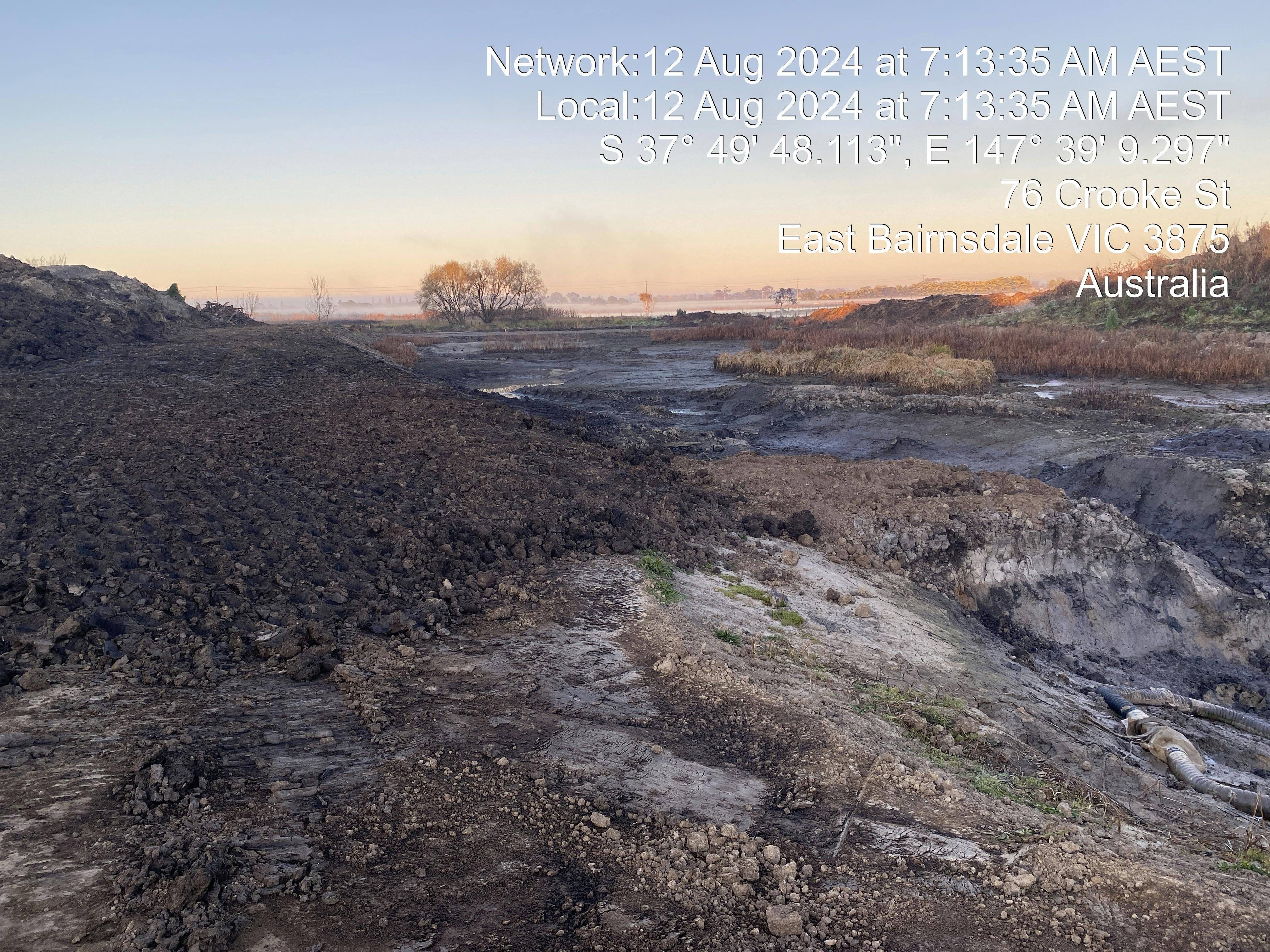Bairnsdale - Jones Bay Southern Catchment / Crooke Street Wetlands

Project Overview
Council will create a wetland at Crooke Street and install gross pollutant traps in Hoddinott Street Reserve in East Bairnsdale to better regulate stormwater, eliminate gross waste and suspended sediments to reduce nutrient flows into Jones Bay. The project has broad stakeholder support and has been developed and co-funded with assistance from a range of partner agencies.
Background
East Gippsland Shire Council is constructing a wetland at 76 Crooke Street, East Bairnsdale. This Council owned land is currently functioning as an open drain, collecting stormwater from surrounding streets and discharging untreated urban runoff into Jones Bay.
Since the inception of the East Bairnsdale / Lucknow Precinct Structure Plan in November 2013, the development of land located east of the Great Alpine Road and south of Lanes Road has been made possible by the construction of a series of wetlands. The Crooke Street wetland is the latest investment in upgrading stormwater assets in East Bairnsdale.
In addition to better regulating surface water movement and reducing the impacts of flooding, constructed wetlands are designed to use natural processes, including vegetation and soil to improve water quality. As water moves through the wetland, it is filtered and cleaned through a series of retention ponds.
Other benefits of constructed wetlands include reduced water pollution and habitat provision for plants and animals. Using natural processes to improve urban water runoff is known collectively as Water Sensitive Urban Design (WSUD). Each wetland is unique; they are specifically designed to meet the conditions of each location.
The proposed wetland located at 76 Crooke Street is regarded as an important piece of stormwater infrastructure.
The Crooke Street wetland has been designed to achieve multiple environmental outcomes including:
- 100% removal of gross pollutants, this includes litter.
- 100% suspended solids.
- 81% of current phosphorus.
- 33% of current nitrogen.
The open drain located adjacent to Jones Bay means that presently pollutants are directly entering the Jones Bay Wildlife Reserve, an important part of the Gippsland Lakes Ramsar site. Ramsar sites are internationally significant habitat for migratory bird species. More than 20 species of migratory birds, including snipe, sandpipers and terns visit the Gippsland Lakes as part of their annual breeding and resting cycle. Most travel from north-east Asia and Alaska, a roundtrip of approximately 20,000kms.
We also know that nutrients like phosphorus and nitrogen build up in the Gippsland Lakes, this directly contributes to the prevalence of blue- green algal outbreaks, limiting recreational use of the lakes and impacting the lakes biodiversity. Improving water quality that is discharging into the Gippsland Lakes will contribute to improving the overall quality of this important environment.
The current site is an open stormwater drain, occupied by weed species, including willow and blackberries. The site is littered with rubbish. By developing this wetland, we will better regulate water flow during large rainfall events. A constructed wetland will also improve the amenity of the area for residents.
For these reasons construction of this wetland has been identified as a priority project by the East Gippsland Shire Council and is recommended for construction in the Bairnsdale Integrated Water Management Plan (July 2021) and the East Gippsland Integrated Water Management Forums Strategic Directions Statement 2022. The Crooke Street wetlands are also an important project for the East Gippsland Integrated Water Managers Forum.
Should Council proceed with approving award of the contract, works are expected to commence late 2024.
Pursuant of section 109(2) of the Local Government Act 2020, the development of the Crooke Street Wetlands Project has been prepared in collaboration with funding contributions from a range of partner agencies.
Funding
Funding to support the project has been provided by the Department of Energy, Environment and Climate Action (DEECA) and the Gippsland Lakes Coordination Committee (GLCC).
Partner agencies involved in this project include:
- East Gippsland Water (EGW),
- East Gippsland Catchment Management Authority (EGCMA),
- Gippsland Lakes Coordination Committee (GLCC),
- Federation University,
- Gunaikurnai Land and Waters Corporation (GLaWAC),
- Department of Energy, Environment and Climate Action (DEECA)
Your questions and/or feedback are welcome on this project - your input is valuable and we are pleased you are on this journey with us. The project supervisor will be advised of your response and will look closely at what you have said - all feedback is important and will be considered.
The Project Supervisor's response can be posted publicly or privately - please let us know if you would prefer to be answered privately.








